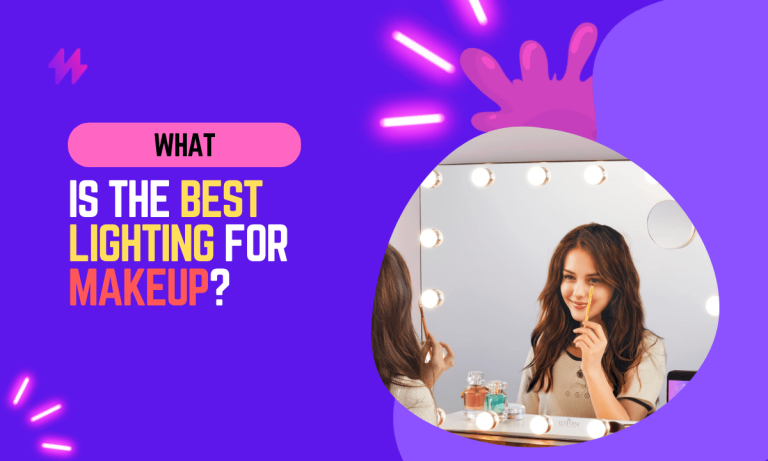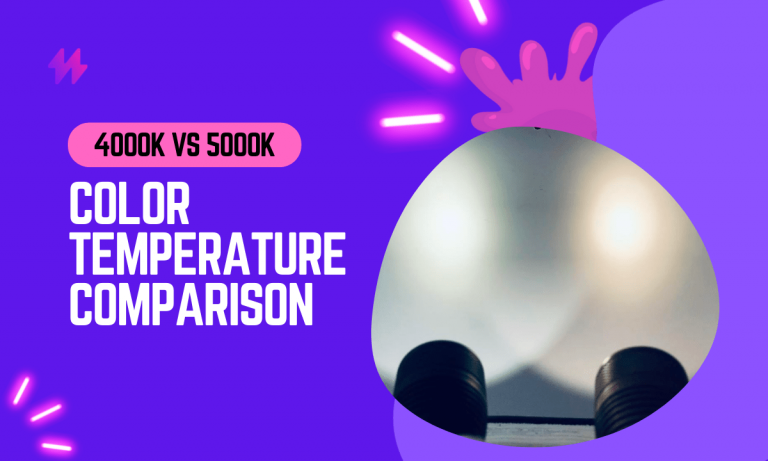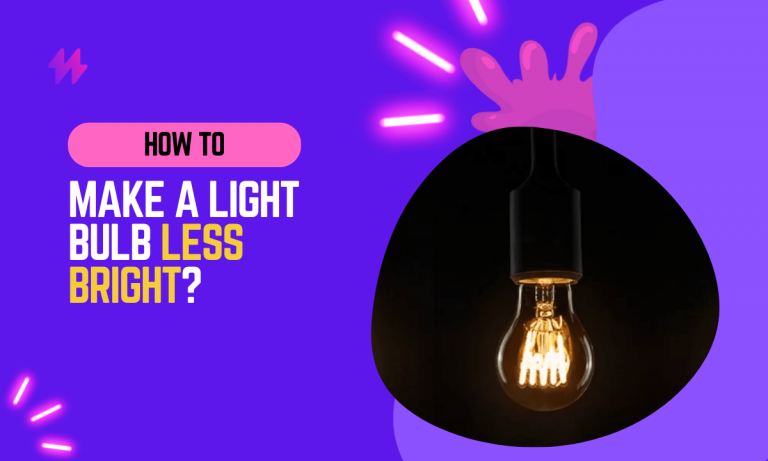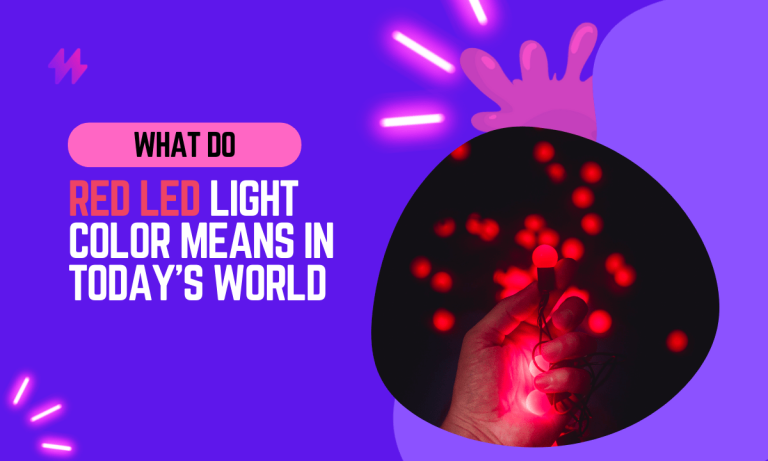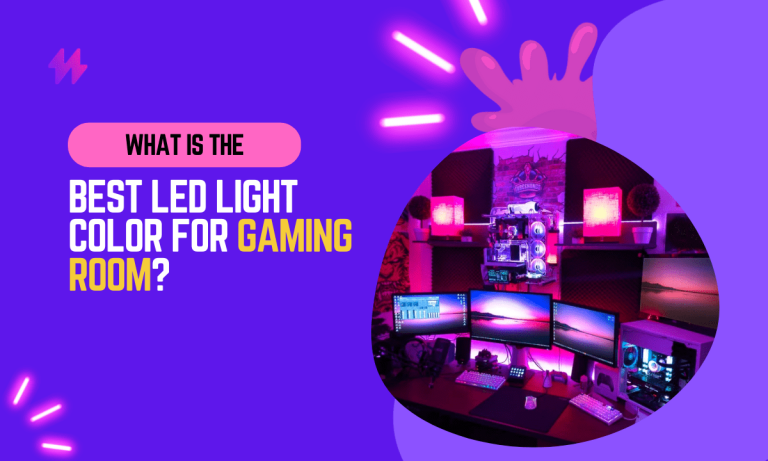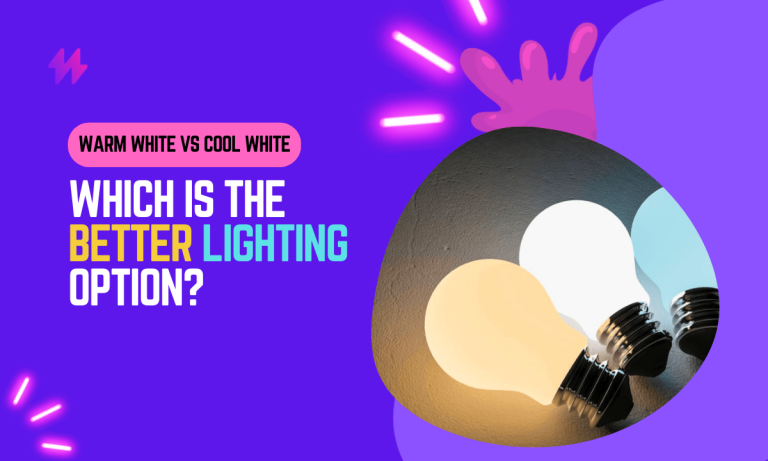2700K Color Temperature: What It Is and How to Use?
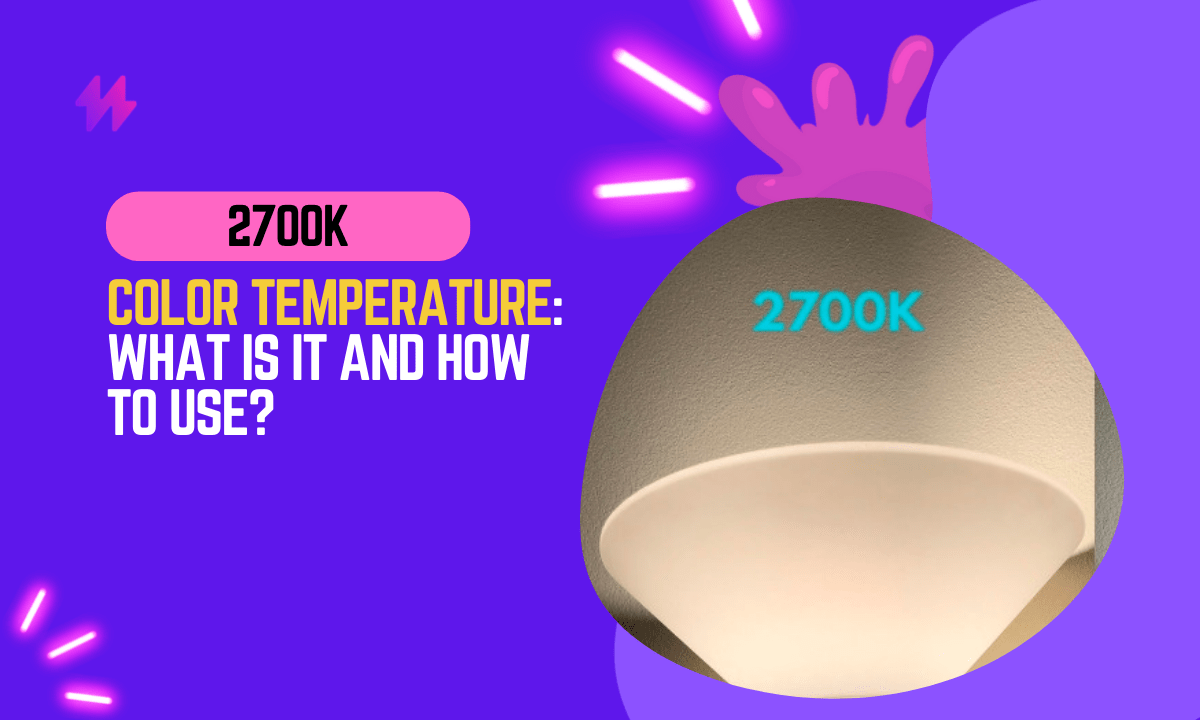
Have you ever wondered what 2700K color temperature means? In this blog post, I’ll explain what it is, why it’s important, and how you can use it to improve your lighting.
Color temperature is a measure of the color of light, expressed in kelvins (K). The higher the Kelvin temperature, the bluer the light will appear. The lower the Kelvin temperature, the more yellow or orange the light will appear.
Light Color temperature is important because it can affect the way we perceive objects. For example, a white object under a cool light (high Kelvin temperature) will appear to be more blue, while the same object under a warm light (low Kelvin temperature) will appear to be more yellow.Table of Contents
Understanding the concept of correlated color temperature (CCT) is crucial for selecting the right light bulbs for your space. Whether you prefer a warm glow with 2700K color temperature or the cooler tones of daylight, knowing the temperature scale helps you create the ideal environment for any setting.
Understanding 2700K Color Temperature: What It Is and How to Use It
Color temperature is a measure of the color of light, expressed in kelvins (K). It is a measure of how warm or cool a light appears to the human eye. Lights with a low color temperature (such as 2700K) appear warmer and more yellow, while lights with a high color temperature (such as 6500K) appear cooler and more blue.
The temperature of light can significantly influence the atmosphere of a room, so understanding the different kelvin temperatures is essential. For instance, the striking contrast between warm colours and cooler hues can be effectively utilized to design a warm environment, enhance color accuracy, and improve the overall experience of the space.
Understanding the Importance of Color Temperature in Lighting Solutions
Color temperature is important because it can affect the way we perceive objects and the way we feel. Warmer light (such as 2700K) can create a more relaxing and inviting atmosphere, while cooler light (such as 6500K) can be more stimulating and energizing.
Creating an atmosphere with the right color temperature can truly transform your living or working space. Factors like weather conditions and the desired color spectrum influence whether you choose warmer yellow tones or cooler blue light for optimal brightness and aesthetics.
Maximizing Lighting Quality: How to Utilize 2700K Color Temperature Effectively
Color temperature can be used to create different moods and atmospheres in your home. For example, a cool light can be used to create a feeling of alertness and energy, while a warm light can be used to create a feeling of relaxation and comfort.
In the next few paragraphs, I’ll share some tips on how to choose the right color temperature for your lighting needs. I’m an LED Light Technician with over 10 years of experience, and I’m confident that I can help you find the perfect solution for your home.
I promise that by the end of this article, you’ll have a better understanding of color temperature and how to use it to improve your lighting.
Also read: Soft White vs Warm White: Crafting the Ideal Ambiance
Color temperature plays a fundamental role in the field of lighting design, impacting not just aesthetics but also functionality. By experimenting with various color temperature options, you can achieve specific effects, such as using cooler blue wavelengths to enhance productivity in an office or warmer yellowish light bulbs for a cozy home environment. Exploring the thermodynamic temperature scale further elucidates how specific kelvin values affect the ambiance and mood within a space.
Understanding the Difference Between 2700K and Other Color Temperatures
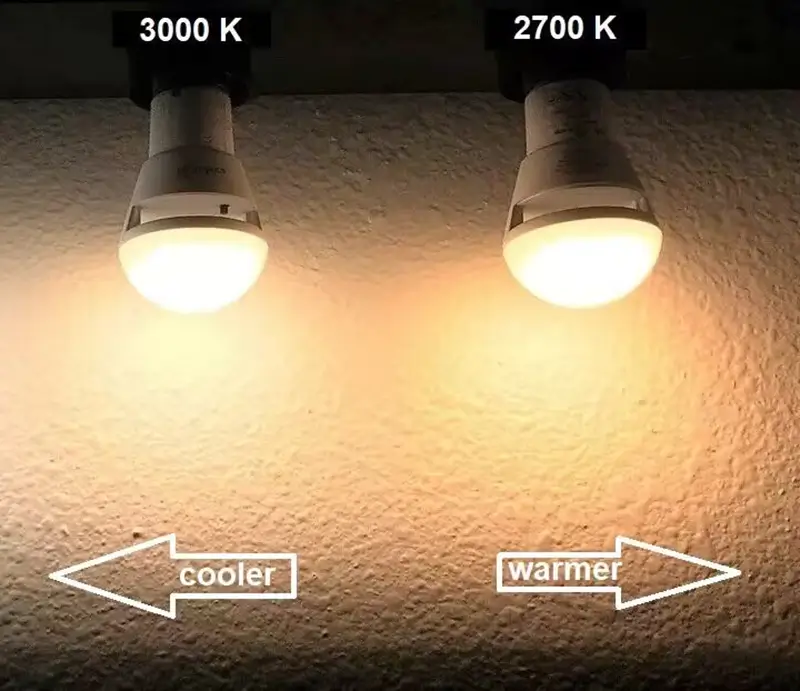
2700K is a relatively low color temperature, which means it produces a warm, yellow light. This type of light is often used in homes and businesses to create a warm and inviting atmosphere. Other common color temperatures include:
2700K is typically ideal for creating a soothing ambiance, emitting a warm yellowish glow that makes spaces feel more comfortable. When selecting color rendering indexes, it’s important to consider the particular color temperature required for your needs, whether that’s the inviting warmth of 2700K or the cooler brightness of 4000-4100K fluorescent bulbs that can enhance color acuity for certain tasks.
- 3000K: This is a slightly warmer color than 2700K and is often used in bedrooms and living rooms.
- 4000K: This is a neutral color that is often used in offices and kitchens.
- 5000K: This is a cooler color than 4000K and is often used in warehouses and factories.
- 6500K: This is the highest color temperature and produces a very cool, blue light. This type of light is often used in commercial spaces such as hospitals and laboratories.
What Lights Have a Color Temperature of 2700K: Exploring Options and Recommendations
Many different types of lights come under 2700K color temperature, including:
Many different types of lights come under 2700K color temperature, including incandescent bulbs, which emit a soft yellow tint ideal for creating a cozy atmosphere. Additionally, when considering lighting solutions, the color temperature rating can impact how various colors are perceived in both natural sunlight and artificial environments.
- Incandescent bulbs
- Halogen bulbs
- LED bulbs
- CFL bulbs
Choosing the Best Color Temperature for Your Needs: A Focus on 2700K
The best color temperature for you will depend on the desired effect and the type of space. Here are a few things to consider when choosing a color temperature:
- The desired effect: Warmer light (such as 2700K) can create a more relaxing and inviting atmosphere, while cooler light (such as 6500K) can be more stimulating and energizing.
- The type of space: Warmer light is often used in homes and businesses to create a warm and inviting atmosphere, while cooler light is often used in offices and kitchens.
- The time of day: Warmer light is often used in the evening to create a relaxing atmosphere, while cooler light is often used during the day to promote alertness.
Also read: How To Check Color Temperature Of LED Light?
Choosing the ideal lighting requires understanding how various color temperatures can affect the mood and functionality of a space. By exploring the degrees kelvin and the associated heat from different light bulbs color, you’ll be equipped to select lighting ideal for both comfort and productivity.
FAQs on Color Temperature: Understanding the Benefits and Drawbacks of 2700K
Below you can find some of the most widely asked questions about 2700K color temperature.
When considering the various color temperature designations, it’s important to understand how they can influence the mood and aesthetics of your environment. The 2700K color temperature offers a warm hue that is perfect for cozy settings, while options within the cool brightness kelvin range, such as 4000K or higher, can be selected for spaces that require more functional lighting.
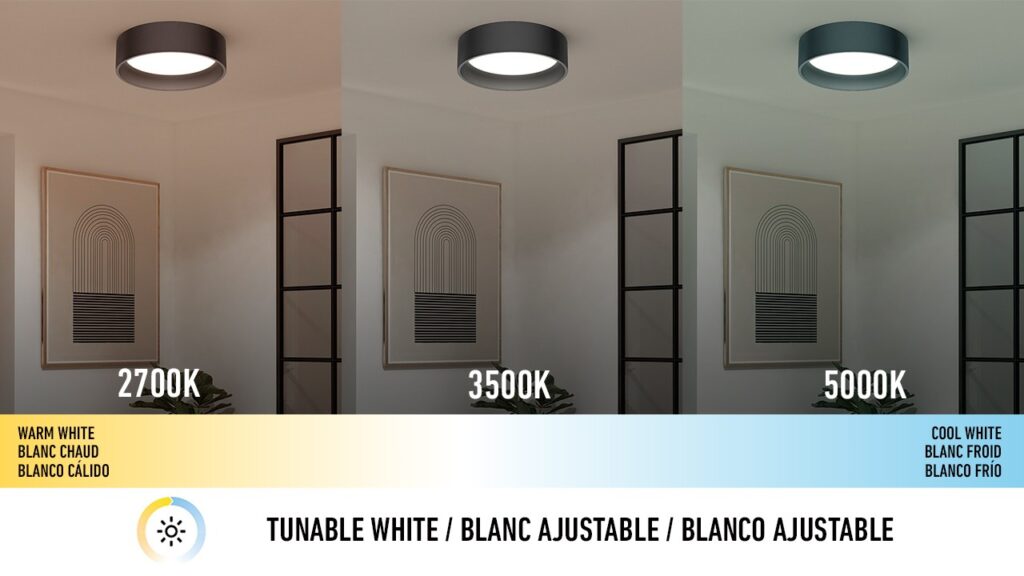
Benefits of Using a Color Temperature of 2700K for Your Lighting Needs
A color temperature of 2700K is often preferred for residential lighting because it creates a warm and inviting atmosphere. It is also a good choice for task lighting, as it can help to improve visual comfort.
Lighting choices can significantly affect the overall ambiance and functionality of a room, making it essential to explore the color temperature range from 2700K to cooler hues. By selecting a precise color temperature, you can create a supportive atmosphere that enhances productivity or relaxation depending on the specific needs of your space.
What Are the Drawbacks of Using a 2700K Color Temperature for Lighting?
A color temperature of 2700K can appear yellow or orange to some people, and it may not be suitable for all applications. For example, it is not a good choice for use in commercial spaces, as it can make people feel sleepy.
When considering the various impacts of light on our environment, it’s important to note that the 2700K color temperature produces a warm white hue that is inviting yet might reduce alertness in a work setting. In contrast, utilizing fluorescent lights with a cooler kelvin temperature, such as 4000K or higher, can enhance focus and clarity, making them suitable for tasks that require sharper color rendering and full brightness.
Common Uses for a Color Temperature of 2700K: Benefits and Considerations
A color temperature of 2700K is commonly used for residential lighting, such as in living rooms, bedrooms, and kitchens. It is also a good choice for task lighting, such as in offices and workshops.
Also read: Avoid Color Temperature Inconsistencies of LED lights
Choosing the right color temperature can significantly influence how colors appear in your space, including cosmetics colors, enhancing or diminishing certain shades. By understanding the relationship between heating and the quantitative kelvin temperature, you can better leverage selectable color lighting for various atmospheres, ensuring that every area feels inviting and functional.
Final Thoughts on 2700K Color Temperature and Its Impact on Lighting
In conclusion, understanding the nuances of 2700K color temperature is crucial for effectively utilizing this warm and inviting light in various settings. This color temperature, which emits a soft white glow reminiscent of the light from a traditional incandescent bulb, is particularly beneficial in creating a cozy and relaxed atmosphere. Ideal for living rooms, bedrooms, and dining areas where comfort is paramount, 2700K lighting enhances the warmth of the space, making it more welcoming. The psychological impact of such warm lighting cannot be overstated, as it tends to relax the mind and can even enhance the perceived temperature of the room, making it feel snugger during colder months.
Furthermore, the application of 2700K lighting extends beyond residential spaces to include areas where a comfortable, intimate ambiance is desired, such as restaurants and boutique retail stores. In these environments, the warm light can influence customer behavior, encouraging them to relax and spend more time in the soothing atmosphere. However, it’s important to balance 2700K lights with other lighting elements, especially in settings that require task lighting. Combining 2700K fixtures with brighter, cooler lights can help maintain functional lighting while still preserving the overall ambiance. By strategically integrating 2700K lighting into a design scheme, one can dramatically enhance the aesthetic appeal and functionality of a space, creating environments that are not only beautifully lit but also emotionally resonant and inviting.
2700K Color Temperature: What It Is And How To Use | Importance of Color Temperature in Lighting Design
Understanding the significance of color temperature is essential for effective lighting design, particularly at the 2700K color temperature. This warm light is measured in Kelvin (K) and corresponds to a cozy ambiance that enhances interior spaces. By grasping the concept of color temperature change, designers can create environments that feel inviting. The 2700K color temperature, sitting at approximately −273.15 °C, leans towards the warm end of the white light range, distinguishing itself from cooler tones. Its ability to complement pale colors and create a soothing atmosphere makes it a preferred choice in residential and commercial settings. Ultimately, 2700K color temperature stands as a vital tool for achieving desired effects in lighting design.
2700K Color Temperature: What It Is and How to Use | The Role of 2700K in Creating Ambiance
The 2700K color temperature is often associated with a warm, inviting ambiance reminiscent of candlelight or incandescent bulbs. Measured at approximately 2700 degrees Kelvin, this lighting helps to create an environment that feels cozy and welcoming. The rich tones produced by the 2700K color temperature can enhance the appeal of warm wood finishes and soft textures, making it ideal for living rooms and bedrooms. Embracing the warmth of this lighting can soften the appearance of pale colours, providing a dynamic contrast to white colour elements in interior spaces.
Utilizing 2700K color temperature in lighting design can dramatically influence the overall mood of a space. This color temperature evokes a sense of comfort and relaxation, perfect for areas meant for unwinding or socializing. The relative heat emitted from lights at 2700K draws people in, encouraging social interaction and creating a pleasant atmosphere. For those exploring 2700K color temperature: what it is and how to use it effectively, understanding its ability to transform spaces is essential for achieving the desired emotional impact.
Energy Efficiency and Color Temperature Choices
Selecting the right color temperature can significantly impact energy consumption. A 2700K color temperature: what it is and how to use it effectively influences the warmth and ambiance of a space while optimizing energy efficiency. Warm white lighting, which typically falls around 2700K, can create a cozy feel, making it an excellent choice for residential areas. Using LED bulbs with this color temperature not only provides the desired aesthetic but also reduces energy usage compared to traditional incandescent bulbs.
Understanding the balance between aesthetics and efficiency is crucial for sustainable design. Utilizing 2700K color temperature: what it is and how to use it can enhance the overall look of a room while ensuring lower wattage consumption. Operating at a temperature around 2700K, these lights emit a soft glow that complements various settings without needing excessive energy in celsius terms. This approach allows designers and homeowners to achieve both environmental and visual goals seamlessly.
Exploring the Aesthetics of 2700K Color Temperature
The 2700K color temperature creates a cozy and inviting atmosphere, making it a popular choice in various interior design styles. This warm light enhances traditional spaces, accentuating rich wood tones and soft textiles. In modern designs, it provides a comforting contrast to sleek surfaces and clean lines. Understanding 2700K color temperature: what it is and how to use it can significantly impact the mood and functionality of a room. By incorporating 2700K lighting, homeowners can effectively achieve a harmonious balance between aesthetic appeal and practical illumination, ensuring that each space feels welcoming and well-designed.
How 2700K Complements Interior Design Styles
The 2700K color temperature creates a cozy and inviting atmosphere, making it an ideal choice for various interior design styles. Whether it’s a contemporary, rustic, or traditional aesthetic, this warm light harmonizes beautifully with rich wood tones, soft fabrics, and vibrant color palettes. 2700K color temperature: what it is and how to use it effectively enhances the warmth of these materials, adding depth and character to the space.
In minimalist or industrial environments, 2700K lighting serves to soften the stark lines and hard surfaces typical of these styles. The gentle glow of this color temperature uplifts the ambiance, transforming cold, open areas into warm, welcoming settings. Understanding 2700K color temperature: what it is and how to use it can guide designers in achieving a balanced and inviting look, essential for making any space feel like home.
Enhancing Mood with Warm Light: The Effects of 2700K
The 2700K color temperature is known for its warm, inviting glow, making it an excellent choice for cozy settings. It creates an atmosphere that feels relaxed and comforting, which is especially beneficial in areas like living rooms and bedrooms. When looking to elevate mood, understanding 2700K color temperature: what it is and how to use it can guide decisions on lighting fixtures that provide an emotional uplift in a space.
Choosing 2700K lighting can significantly influence the way people perceive their environments. Warm light is said to enhance feelings of tranquility and connection, making it ideal for social gatherings or quiet evenings at home. By exploring 2700K color temperature: what it is and how to use it, designers can effectively harness its potential to foster a sense of well-being and harmony within various interior spaces.
Practical Applications of 2700K Color Temperature
The versatility of 2700K color temperature makes it suitable for a variety of environments, enhancing both indoor and outdoor spaces. In homes, this warm hue creates a cozy and inviting atmosphere, making it ideal for living rooms and bedrooms. Restaurants and cafes also benefit from 2700K lighting, as it encourages relaxation and conversation among patrons. For outdoor areas, such as patios or gardens, 2700K illuminates pathways and seating areas without feeling harsh, providing a welcoming ambiance. Understanding 2700K color temperature: what it is and how to use it effectively can transform any space into a haven of comfort and style.
Suitable Environments for 2700K Lighting
2700K lighting is highly effective in residential settings, particularly in living rooms and bedrooms. The warm hue enhances comfort, making spaces feel inviting and relaxed. This color temperature is ideal for areas where soft illumination is desired, allowing for easy transition from bright daylight to a cozy atmosphere during the evening. Understanding 2700K Color Temperature: What It Is and How to Use it can help homeowners create the perfect environment for unwinding at the end of the day.
Commercial spaces also benefit from 2700K lighting, especially in cafes and restaurants. This color temperature fosters a sense of warmth that encourages customers to linger and enjoy their meals. It can be effectively utilized in dining areas and lounges, enhancing the overall dining experience. By exploring 2700K Color Temperature: What It Is and How to Use, business owners can optimize their lighting design to attract more patrons and keep them comfortable.
Incorporating 2700K in Outdoor Spaces
Utilizing 2700K color temperature in outdoor spaces creates a warm and inviting atmosphere. This soft glow can enhance patios, porches, and gardens, making these areas more enjoyable during the evening. 2700K color temperature provides the ambiance needed for gatherings or quiet moments outside, allowing you to fully appreciate your outdoor environment. Understanding 2700K color temperature: what it is and how to use it helps in selecting the right fixtures and placements to maximize this effect.
With the right planning, 2700K lighting can transform even the simplest outdoor areas. Pathway lights, string lights, and sconces in this color temperature offer not only safety but also a cozy feel. The glow of 2700K can highlight landscaping features and add charm to outdoor décor. By emphasizing the qualities of 2700K color temperature: what it is and how to use it, homeowners can achieve inviting outdoor settings that blend seamlessly with their overall design aesthetic.

